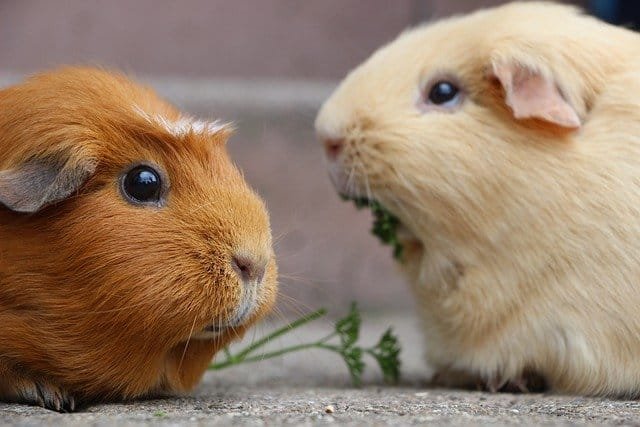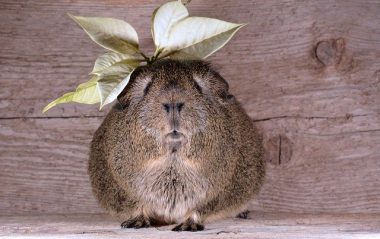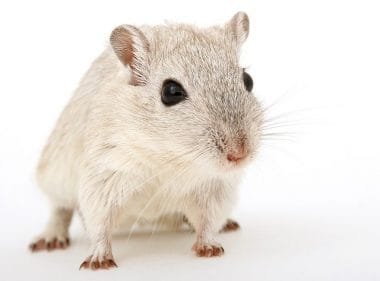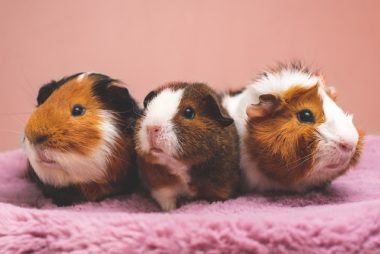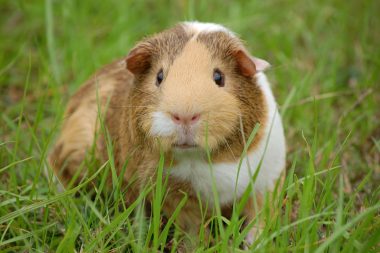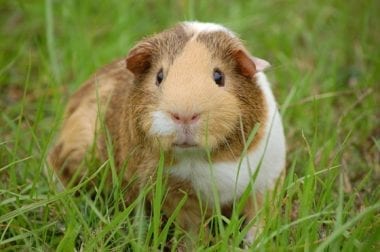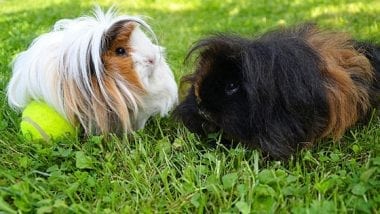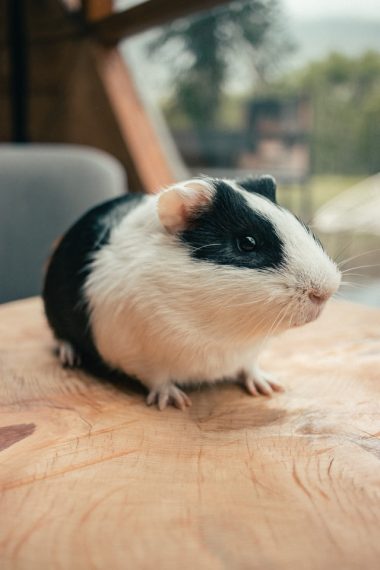Guinea pigs are popular pets mostly because of their cuddly and friendly nature. These animals love to socialize and are fond of being surrounded by other guinea pigs. They often require companionship to be happy and lead a fulfilled life.
They have a life expectancy from 4-8 years on average. As pet owners, you should make sure that they live under favorable circumstances. It may sound contradictory but several new guinea pig owners have found out that their pets are always not so caring and friendly towards each other.
It may come as a shock particularly when you are bringing guinea pigs to your home for the first time. Or there was a peaceful and calm environment at home already. Apart from knowing everything about guinea pig dominance, the article also covers details such as how long does guinea pig dominance last.
What is guinea pig dominance?
It refers to a situation where one or several guinea pigs become aggressive with the other roommates. While these animals appear to be extremely innocent and timid, there are several such scenarios where one of them tried to establish its superiority over the others.
However, you may ask why does one of the pet guinea pigs feel the need to be like an alpha in the entire group. You may consider it to be the circle of life. All animals in a society naturally live in this manner. They have leaders who are more in charge and control. It looks like some guinea pigs want to enjoy a higher status.
For them, higher status refers to more access to available resources. In case you have had a pair of guinea pigs for quite a long time, you will observe how one of them appears more confident. The ability to procure the exact food without any opposition from the rest of the group is a key merit of becoming an alpha.
You may find this phenomenon less common if they are all in a cage and their owner gives them all they require. On the other hand, an alpha enjoys a preference for everything in the wild. They are the ones to enjoy better food and better mates.
Is dominance a feature seen in all guinea pigs?
Surprisingly though, all guinea pigs are not dominant in nature. Dominance is a trait that can vary significantly from guinea pig to guinea pig based on factors such as their cage mates, living environment, and their behavior. It means that some guinea pigs show more dominant characteristics as compared to others. We should appreciate that it is how they bond naturally and should not intervene to change their behavior.
It is more likely for male guinea pigs to show more dominance as compared to their female counterparts. The behavior could also last for an extended period. There is usually an end in the dominant behavior of guinea pigs when one of them giving up and accepts their defeat and lowers their head. They produce a chuttering or rumbling noise while lowering their heads. Meanwhile, the dominant guinea pig marks off its territory and acts as a leader.
Now that you are familiar with some of the fundamental concepts about guinea pigs’ dominance, it is time to pick up the signals of their dominance.
How do guinea pigs show their dominance- Signs of dominance?
At times, the phase of dominance passes soon and there are hardly any signals of it. That is because one of them gives up instantly. Normally, you will observe the guinea pigs making a loud squeal and running away. That indicates they are no match for the dominant guinea pig and give up.
Sometimes, it is not so quick as the face-off lasts for quite some time as both parties do not want to give up. Such a confrontation typically begins with a verbal face-off. In case both parties remain dominant, it can result in a physical confrontation.
Guinea pig dominance appears the way it sounds. It is a situation where one of the guinea pigs clearly tells others that they are the leaders. The wannabe alpha even shows off how strong and big it is.
These guinea pigs do not even indulge in aggressive behavior or are harmful towards their cage mates always. Teeth-chattering is a behavior guinea pigs resort to let others know that they are unhappy with the prevailing situation. The action can be compared to a cat hissing or a dog growling when it sees another dog.
It is a kind of earning to scare off their cage mates and tell them to not go near them. It is just one of the signs to let others know that they have an upper hand. Guinea pigs may also hump at one another and it is not a sexual thing always.
Mounting and purring are some of the other ways a guinea pig tries to show off others that it is the dominant one. The sounds are the signals to tell that they are more powerful and stronger. Both male and female guinea pigs can use these tactics to show their dominance.
Like we said earlier, although any guinea pig can demonstrate dominant behavior or want to be an alpha, such behaviors are a notorious and common problem among males. If many male guinea pigs are living together, it is also common for all of them to fight. When all these guinea pigs start fighting, it may not be a pleasant scene.
Though tiny in size, guinea pigs can also cause some kind of damage to each other if they are in the mood for it. Guinea pigs have sharp teeth while their size is decent enough to hurt one another while fighting. The situation can be a messy one when many male guinea pigs are fighting for dominance. It can be also fatal in some situations.
It is imperative to note in this context that innocent and weak animals often become the victims of their anger. You mustn’t permit the situation to such a level when such unfortunate events may occur.
Some of the most common signs when guinea pigs compete with each other for dominance are as follows:
· Dragging bottoms around a cage to leave a scent and thus mark their territory
· Chasing one another
· Open their mouth and shoe the teeth
· Snorting
· Teeth chattering

Mounting and chasing- Guinea pig dominance behavior
In case both the guinea pigs are not ready to accept defeat while having a verbal confrontation, one of them will begin to demonstrate some kind of physical dominance behavior.
The guinea pig will raise its chin high, wiggle its bottom, and make a chuttering or rumbling noise. Thereafter, one of them can also start rubbing its bottom in an area thus marking the territory. In case the other guinea pig(s) are still not ready to back down, then the dominance may now include mounting and chasing behavior.
Typically, the guinea pig, which is the more dominant one will chase the other one rumbling loudly and nipping at the back as they run around the cage. After chasing and cornering the other guinea pig, it will start humping and mounting the latter.
Normally, this kind of dominance behavior will last until the other guinea pig admits defeat and accepts its new role as a subordinate guinea pig in the cage. In a majority of situations, the dominant guinea pig will behave as the leader and there will be peace inside the cage as usual.
There are times though when chances do exist for a severe fight. In case none of the guinea pigs is ready to give up, the dominant behavior may lead to some serious turn.
The struggle for dominance can become dangerous at this stage as both guinea pigs will tackle one another, bite each other and make loud rumbling noises. You may have to intervene when the dominant behavior seems like taking a serious turn. It is time for you to stop both of them as they can harm one another severely. It can be also fatal for them if not stopped. You can stop them and place them in separate cages. Alternatively, you may add a divider in a cage to calm down the situation.
There are several factors, which can trigger strong dominance behavior, especially in male guinea pigs. Following are some of these most common reasons:
· When a new mate is introduced in the cage
· Inadequate resources or lack of proper space
· If a female guinea pig is present in the cage
· Changes in season can affect behavior
· When a young guinea pig transitions into an adult one
How long does guinea pig dominance last?
One very crucial and pertinent question while discussing guinea pig dominance is how long does guinea pig dominance last. Such dominant behavior may last for as short as just 2 days to a fortnight, several months, or even for a longer duration.
The duration of the guinea pig dominance depends on an array of factors. Some of them are listed below:
· On the individual guinea pigs
· Personality and age
· Environment
· Total number of guinea pigs put together in a cage
· Duration for which they live together
· Current social status
Due to all these factors, there is no exact period within which one of the guinea pigs is ready to accept defeat and regard the other one as its leader. Until the time one of them accepts the subordinate position, as well as, respects the dominant one, the fight can continue.
There are cases when the dominant behavior has lasted for several years as well. For instance, if you put a pair of grown-up guinea pigs with a young one, the latter may behave as a subordinate for some months. However, he may grow strong enough after that and challenge the dominant guinea pig. Thus the cycle to become the dominant one in the cage starts again.
Conclusion
In case you have recently kept some guinea pigs in a cage or own many guinea pigs, you might have observed that they may not get along. You might have initially expected or hoped that they will be very close but that did not happen. It is a common occurrence among the guinea pigs when they are kept together.
However, it is not always easy to handle or see such a situation easily. The resistance is referred to as “guinea pig dominance,” which can later become a severe issue if not addressed timely. In fact, guinea pig dominance can create a real conflict in an otherwise harmonious cage especially when none of the guinea pigs accept defeat.
The fight can become intense then and can even be fatal. Fortunately though, if some simple steps are taken, such standoffish behavior can be reduced and managed. We also explained how long does guinea pig dominance lasts in this article so that you are better prepared.
